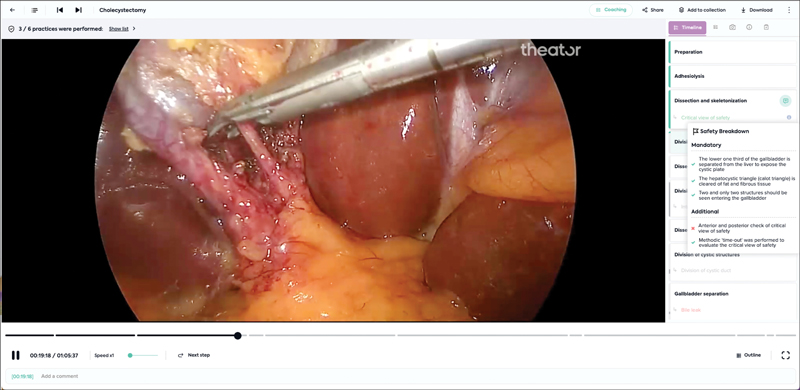WASHINGTON—The introduction of a surgical intelligence platform led to full adoption of critical view of safety in laparoscopic cholecystectomy procedures within six months in two general surgery departments. The findings of the single-center study were presented at the 2024 annual meeting of the American Surgical Association.
“CVS [critical view of safety] is one of the best-validated techniques that surgeons can use to minimize the risk of bile duct injury in LC [laparoscopic cholecystectomy]—the Achilles’ heel of the procedure, associated with a lot of misery and even death,” said Gerald M. Fried, MDCM, a professor of surgery at the McGill University School of Medicine, in Montreal, who presented the study. “CVS gives you the best chance of saving the bile duct, and many societies have adopted it as part of their practice guidelines. Most surgeons report that they’ve achieved it, but we found when we looked at videos of procedures, in practice it’s achieved less than 40% of the time.”
Two general surgery departments at the Tel Aviv University Sourasky Medical Center launched a quality improvement initiative in March 2023, adopting the Theator surgical intelligence platform, which uses artificial intelligence—specifically, computer vision algorithms informed by surgeon expertise—to analyze the success of CVS during laparoscopic cholecystectomies. The platform assessed whether the three main components of CVS were performed: dissection of the lower third of the gallbladder from its attachment to the liver; removal of all fatty and lymphatic tissue from the cystic triangle; and confirming visibility of two, and only two, structures (the cystic artery and cystic duct) connecting the gallbladder before removal.
Analysis of 279 videos revealed that failure to fulfill a single component accounted for most cases in which the CVS was not achieved. After feedback to the surgeons and by providing individual data analytics, the rate of achievement of all components of the CVS rose from 39.2% to 69.2% over the three months after the quality intervention (P<0.001). Moreover, the investigators found that increased CVS adoption was associated with a 10-minute reduction in mean procedure duration and fewer adverse events.
Dr. Fried noted that adoption of surgical intelligence technology did not interfere with workflow, but led to more efficient procedures. “This does not lay an additional burden on surgeons—the technology is available now, and as the data sets get larger and larger, the AI will only improve,” he said.
“It’s not always the case that the interests of academic surgical centers and industry are aligned, but in this case, there is a mutual interest in applying automation to help surgeons make better decisions and improve outcomes,” Dr. Fried noted. “This synergy between what surgeons need and what industry can provide is really important as we look at this technology and its potential impact on healthcare.”
Dr. Fried reported serving as a medical consultant to Theator.


